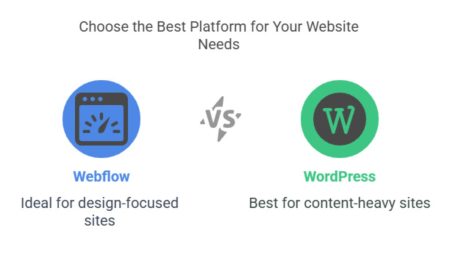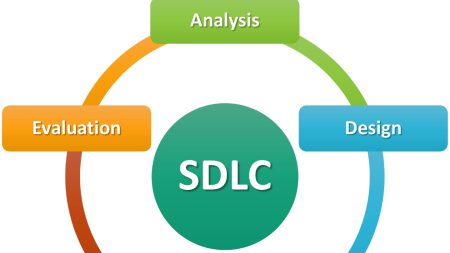The Future Beyond the Screen
Today we can pull up information with the swipe of a finger or attend virtual meetings from the comfort of our couches, the digital realm has evolved into something almost tangible. Yet, have you ever wondered what it would be like to step through the screen and enter a world that feels so real, you could touch it? Welcome to immersive reality – the future of how we will interact with the digital world. Immersive reality is more than a buzzword; it’s a seismic shift in how we experience technology. It’s a leap from observing through a window to walking through the door. But what does this all mean? Let’s break it down step by step. We’ll explore the various forms of immersive technology, discuss their potential, and dive into the fascinating realm of fully immersive virtual reality (VR), immersive augmented reality (AR), and immersive mixed reality (MR).
What Is Immersive Reality?
Let’s start with a rhetorical question: What would you prefer – watching a football game on TV or standing right in the middle of the field? Immersive reality lets you choose the latter. This technology creates a digital environment that mirrors real life, or it may even blend the physical and digital worlds. Immersive reality services are designed to surround you with digital experiences that react to your presence, making you feel as though you’re an integral part of the action. IR spans a range of technologies, with immersive extended reality (XR) serving as the overarching term that encompasses VR, AR, and MR. Each has its own distinct flavor, offering users new ways to interact with the digital and physical worlds.
Enter in a New World with Fully Immersive Virtual Reality
Now, let’s dig deeper into fully immersive virtual reality. Imagine putting on a headset and, within seconds, you find yourself in the middle of a bustling city – or maybe even in outer space. Your physical surroundings melt away as you enter a computer-generated world that feels as solid as the chair you’re sitting on. This is the magic of fully immersive VR. Unlike traditional gaming or viewing experiences, fully immersive VR tricks your brain into believing the virtual world is real. Virtual reality has come a long way since the clunky setups of the 90s.
Some Statistics
Today, sophisticated systems like the Oculus Rift or HTC Vive create detailed environments that respond to your movements and actions. The applications of this technology are vast and varied, going far beyond gaming. According to a report from Statista, the global virtual reality market is expected to reach $87 billion by 2030. The reason for this explosive growth? VR’s potential to change industries like education, healthcare, and real estate. Surgeons are now practicing complex operations in virtual reality before stepping into the operating room. Students are traveling through time and space, visiting ancient Rome or the deepest parts of the ocean – all without leaving their classrooms.
Enhance Our World by Immersive Augmented Reality
In contrast to VR, immersive augmented reality enhances the world we see, rather than replacing it. Picture this: You’re shopping for furniture. Instead of imagining how that new couch will look in your living room, you simply point your phone toward the empty space and – voilà – the couch appears, perfectly proportioned and realistic. That’s the beauty of immersive augmented reality. One might say AR is like adding digital layers to the physical world.
Real Impact
Whether it’s filters on Instagram or Pokémon Go leading you on an adventure in your neighborhood, AR brings digital objects into our everyday environment. But the scope of AR goes far beyond social media fun. Retailers are already leveraging immersive augmented reality to give customers richer experiences. Take Ikea’s AR app, which lets you try out furniture in your home before you buy it. Or look at how AR is reshaping industries like healthcare – imagine surgeons using AR glasses to get real-time data overlays while they operate. Pretty cool, right?
Immersive Mixed Reality Bridges Two Worlds
At the crossroads of VR and AR lies immersive mixed reality. You might be scratching your head and asking, “So what’s the difference between AR and MR?” Here’s a simple analogy: If VR takes you into another world and AR adds digital elements to your current one, MR makes those digital elements interactive within your space. In essence, it’s the bridge between the physical and digital. Take Microsoft’s HoloLens, one of the most prominent examples of immersive mixed reality solutions.
Digital and Physical
The device allows you to interact with digital content as though it physically existed in the room with you. Whether it’s architects designing buildings or mechanics fixing engines, mixed reality is changing the way professionals work by blending both worlds. With MR, you could be sitting at a desk, manipulating virtual screens floating in front of you or interacting with a virtual assistant who appears as a 3D hologram right beside you. In a nutshell, immersive mixed reality allows you to straddle the line between the digital and physical.
Digital Immersive Reality Solutions in Business
It’s not just gamers and tech enthusiasts who are singing the praises of immersive technologies. Businesses also jump aboard the immersive train – and for good reason. In fact, digital immersive reality solutions are set to become a cornerstone in many industries. Take the automotive industry, for instance. Companies like BMW use immersive reality to offer virtual car showrooms where potential customers can explore every nook and cranny of a vehicle without setting foot in a dealership.
Business Statistics
What’s more, AR development solutions transform the way companies train employees. Imagine working in a factory and using AR glasses that highlight the specific tools or parts you need in real-time. A PwC study found that VR and AR have the potential to add $1.5 trillion to the global economy by 2030, with industries like healthcare, manufacturing, and training benefiting the most. For businesses, immersive reality services are not just about novelty; they’re about efficiency, engagement, and innovation.
How Immersive Reality Impacts Healthcare?
Now, let’s peel back another fascinating layer: healthcare. Can you imagine undergoing surgery that was rehearsed hundreds of times, not on a cadaver, but in a fully immersive digital space? This isn’t science fiction; it’s happening today. Surgeons use immersive extended reality to practice complex surgeries before operating on real patients. This leads to better outcomes and fewer mistakes. Immersive technologies also improve patient experiences. VR is being used for everything from pain management to anxiety reduction. For example, studies have shown that patients using VR during painful procedures report significantly lower levels of pain. In the field of mental health, VR is being explored as a tool for exposure therapy, allowing patients to confront fears in a safe, controlled environment.
Immersive Reality in Education
Let’s take a trip back to school – only this time, it’s through the lens of immersive reality. Imagine learning about ancient Egypt by virtually standing inside a pyramid or studying the solar system while “floating” among the planets. What is immersive virtual reality doing to education? It’s transforming the classroom into an interactive learning experience. The application of IR in education gains traction as educators see its potential to make learning more engaging and effective.
Real Examples
With tools like Google Expeditions, students can embark on virtual field trips, experiencing places and cultures they may never otherwise visit. And it’s not just limited to history or geography – subjects like science and mathematics also can benefit from this technology. VR chemistry labs or AR anatomy lessons? The future is here. According to a report by ResearchAndMarkets, the education sector’s investment in immersive reality services is expected to reach $700 million by 2025, driven by the growing need for interactive and flexible learning environments.
What Lies Ahead?
Immersive reality doesn’t show signs of slowing down. In fact, it’s on track to become an integral part of our daily lives. From retail to real estate, from education to entertainment, the possibilities are almost endless. The magic of immersive technology is that it isn’t just about adding bells and whistles – it’s about reshaping the way we experience the world. But, with any technological advance comes challenges. Fully immersive virtual reality, while astonishing, still faces hurdles like cost, accessibility, and hardware limitations. Immersive augmented reality is advancing by leaps and bounds, but we’re still working on refining accuracy and user experience. And, of course, there’s always the question of how these digital realities affect our perception of the actual world around us.
In short
So, is immersive reality worth the hype? Considering the billions of dollars being funneled into research and development, the answer seems to be a resounding “yes.” It’s not a question of “if” immersive technologies will transform industries, but “when.” Immersive reality offers a chance to break free from the confines of two-dimensional screens and enter a world where the digital and physical blend seamlessly. Whether through fully immersive virtual reality, augmented reality, or mixed reality, the potential applications are vast and varied. As we stand at the edge of this digital revolution, one thing is clear: immersive reality services are no longer the stuff of science fiction. They’re already reshaping the way we live, work, and play. And, as extended reality XR application development becomes more refined and accessible, the possibilities are only bound to grow. So, strap on your virtual reality headset or open up your AR app – the future is already here.











